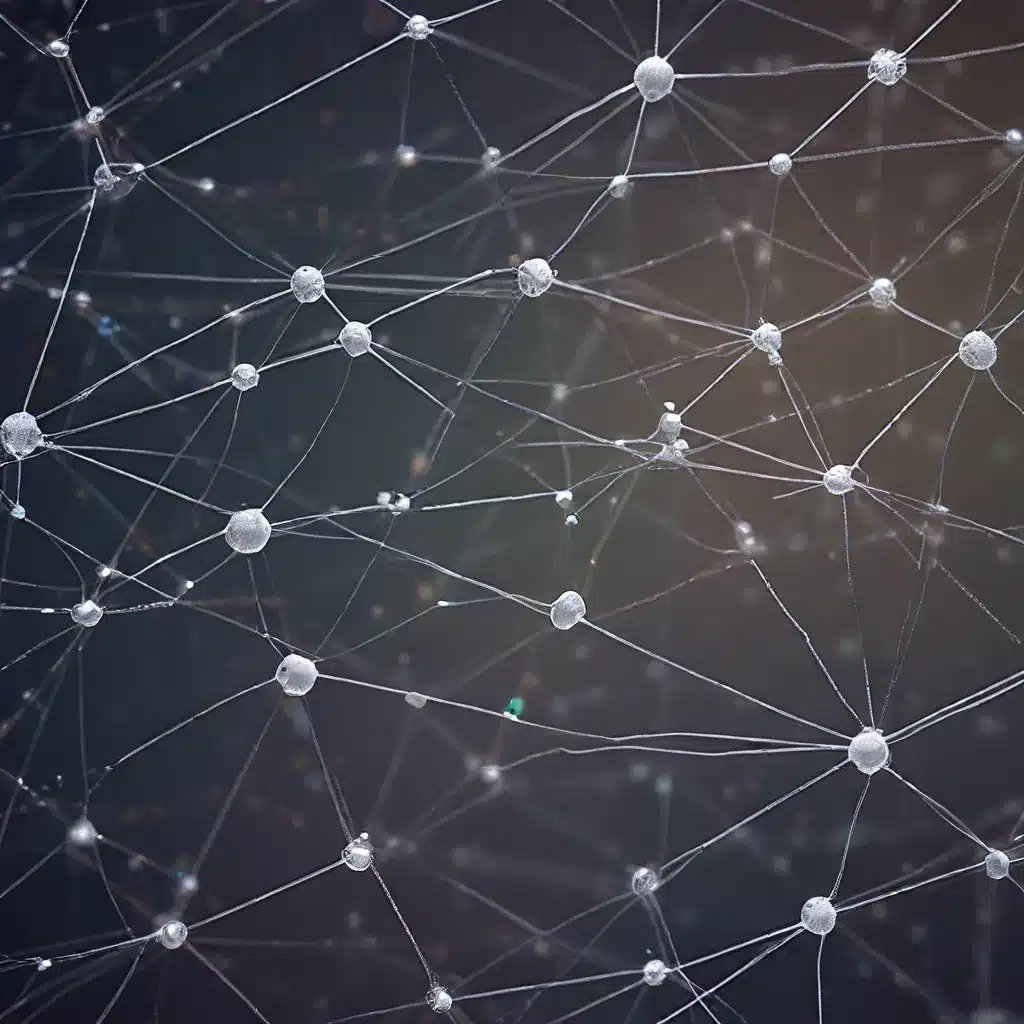
In the rapidly evolving landscape of sensor networks and Internet of Things (IoT) technologies, the coordination and collaboration between individual nodes or devices have become increasingly crucial. As these networks grow in scale and complexity, the need for efficient and adaptive distributed algorithms to manage their operations has become paramount. This article delves into the key considerations and advancements in this domain, exploring how sensor network design, security, and energy management can be optimized to unlock the full potential of these interconnected systems.
Sensor Network Design: Balancing Collaboration and Responsiveness
The design of sensor networks is a delicate balance between fostering effective collaboration among nodes and ensuring responsiveness to external stimuli. Distributed algorithms play a pivotal role in achieving this equilibrium, leveraging techniques from various fields, including computer graphics, optimization theory, and computational geometry.
One of the primary challenges in sensor network design is the geometric complexity of the network topology. Highly robust and precise geometric computations are essential for accurately modeling the connectivity and spatial relationships between nodes. This information is crucial for developing efficient localization algorithms, time synchronization protocols, and clustering mechanisms that optimize network performance.
Recent advancements in brain network reconstruction and 3D visualization techniques have provided valuable insights into the nature of complex network architectures. By studying the geometry and connectivity of these networks, researchers can better understand the principles of natural computation and apply them to the design of sensor network coordination algorithms.
Furthermore, the integration of robotics and automation technologies has expanded the horizons of sensor network applications. Distributed vision-based navigation, telerobotics, and sensor-robot networks have enabled a wide range of real-world use cases, from natural environment observation to space exploration and manufacturing monitoring.
Sensor Network Security: Safeguarding the IoT Ecosystem
As the deployment of sensor networks and IoT devices continues to grow, the need for robust security measures has become increasingly critical. Distributed algorithms play a crucial role in addressing the unique security challenges posed by these interconnected systems.
Malware detection, intrusion prevention, and web/social network security are areas where researchers have made significant advancements. By leveraging techniques from machine learning, statistics, and applied cryptography, researchers have developed innovative algorithms to detect and mitigate security threats in sensor networks and IoT environments.
The SPIES research lab at Texas A&M University, for instance, has been at the forefront of this effort, focusing on the security and privacy of emerging systems, including mobile and wireless networks, IoT sensors, and radio-frequency identification (RFID) devices. Their work has been supported by various funding sources, including the National Science Foundation, Department of Justice, and industry partners.
Moreover, energy management and fault tolerance are essential considerations in sensor network security. Distributed algorithms that optimize energy consumption and failure resilience can significantly enhance the overall security and reliability of these systems, ensuring their longevity and responsiveness in the face of potential threats.
Energy Management in Sensor Networks: Maximizing Efficiency and Sustainability
The efficient management of energy resources is a crucial factor in the design and deployment of sensor networks. Distributed algorithms play a crucial role in addressing this challenge, enabling power-aware scheduling, real-time embedded systems, and energy-efficient network optimization.
Hardware-software co-design approaches have emerged as a promising strategy for balancing the trade-offs between energy consumption and system performance. By leveraging reconfigurable architectures and systems-on-chip (SoC) technologies, researchers can develop sensor network nodes that adapt to changing environmental conditions and workloads, optimizing their energy usage without compromising functionality.
In addition, the integration of renewable energy sources and energy harvesting techniques has further enhanced the sustainability of sensor networks. Distributed algorithms can be designed to intelligently manage the energy budget of individual nodes, ensuring that they can operate continuously without the need for frequent maintenance or battery replacements.
The Laboratory for Embedded Networked Sensor Systems at Texas A&M University has been at the forefront of this research, exploring various distributed coordination algorithms for localization, time synchronization, clustering, and topology control. These advancements have helped improve the quality of service (QoS), fault tolerance, and energy management capabilities of sensor networks, paving the way for more reliable and efficient IoT deployments.
Towards a Collaborative and Responsive Sensor Network Ecosystem
As the world continues to embrace the transformative potential of sensor networks and IoT technologies, the role of distributed algorithms in shaping their future has become increasingly critical. By optimizing collaboration, responsiveness, security, and energy management, these algorithms are poised to unlock new frontiers in natural environment observation, distance learning, surveillance, construction monitoring, manufacturing, and beyond.
The research efforts undertaken by various institutions, such as the Geometry and Graphics Group, Center for Robot-Assisted Search and Rescue, Distributed AI Robotics Lab, and Interface Ecology Lab, have laid the groundwork for these advancements. As the field continues to evolve, we can expect to see even more innovative applications and solutions emerge, driven by the power of distributed algorithms and their ability to coordinate complex sensor network ecosystems.
By staying informed about the latest developments in this domain, professionals, researchers, and enthusiasts can contribute to the ongoing progress and help shape the future of sensor networks and IoT technologies. The sensor-networks.org platform provides a valuable resource for staying up-to-date with the latest trends, research, and industry insights in this rapidly evolving field.